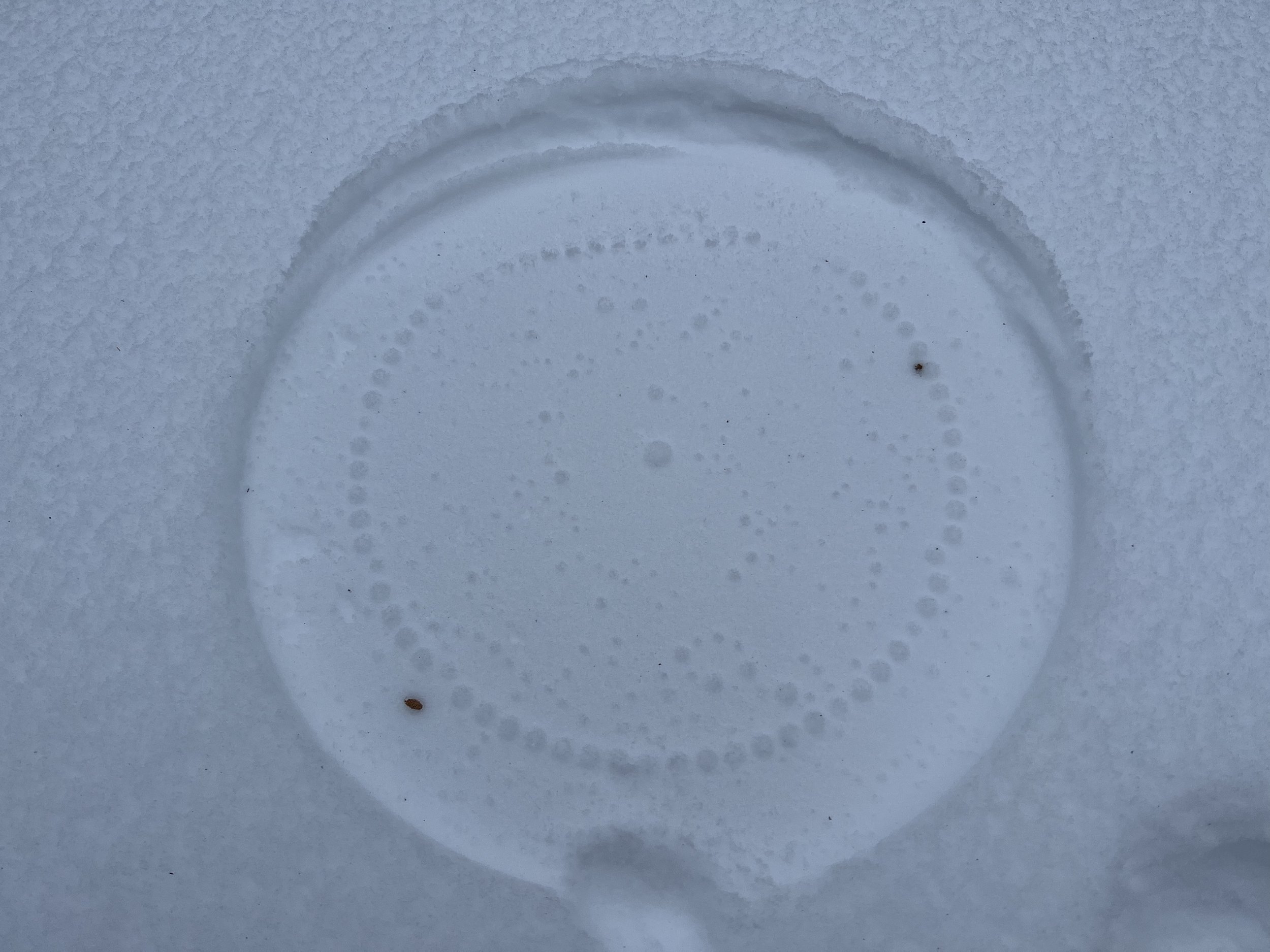A Planetary Parade for Christmas
We race speedily toward the end of 2022, when Stargazers will rejoice looking at the last Sunset skies of the year. Not because of a Star of Bethlehem, or a Great Conjunction like 2020, but because all 5 planets we can see, plus the Moon, will be visible at the same time once the Sun goes down. A Planetary Parade!
Christmas Day 2022
A Great Big Bowl
We end the year with a “Bowl Chart”. That is to say, all of the Wanderers are together in one half of the sky. Because the Sun forms the Western or Clockwise “Lip of the Bowl”, this places every other celestial mover in the sky after it sets. Conversely, no planets at all will be visible at Dawn.
Sun & Solstice
Each Year near December 21st, the Sun pauses at its furthest point South, before turning around and heading North once more. This is called a Solstice, from Latin Sol (Sun) + Sistere (Stop). You can see this position on a globe, labeled as the Tropic of Capricorn. This event begins the Winter in the Northern Hemisphere, and is the shortest day/longest night of the year. Vice versa for the Southern Hemisphere.
An Old/Dark Moon on the Southern Solstice, December 21, 2022
Mercury & Venus
Having inferior orbits compared to the Earth, Mercury and Venus are always quite close to the Sun. For Mercury, it has recently reached its peak distance ahead of our star, and will be nicely visible for the week between Christmas Eve and New Year’s. However, it will begin its Retrograde process on December 29th, so will be the first planet to disappear from our parade.
Venus, on the other hand, spent most of the Autumn completely invisible behind the Sun, and is now just far enough ahead to start peaking out of the sunset colors. She will only get higher, brighter, and more glorious through the Winter and Spring months of next year. During this week, you can use Venus to help you locate dimmer Mercury.
Saturn & Jupiter
The two slowest planets will appear much higher up in the sky at Sunset, with Saturn a bit toward the West, and Jupiter nearly exactly overhead, culminating as it’s revealed. Of the two, Jupiter will come out first and be much easier to recognize, so you can use it’s position to help you find Saturn after (by following Westward and downward toward where the Sun had gone). Another beautiful feature to acknowledge here is the huge Square of Pegasus, which looms over Jupiter, even higher above you (if you’re north). It will take some time to come out in the twilight, so be patient!
Mars
The Red Planet forms the other, counter-clockwise “Lip of our Bowl”, and will appear much closer to the Eastern Horizon at Sunset, rising ever higher in the twilight. After it’s recent Opposition to the Sun, and occultation by the Full Moon, Mars remains quite bright. You’ll find it quite near to the red star marking the eye of Taurus, Aldebaran. This part of the sky also features the iconic Pleiades and Orion, always favorites for stargazers in the Northern Winter. If you wait a bit longer into the night, the brightest star in the sky, Sirius, will rise into view as well!
1st Quarter Moon culminates with Jupiter at Sunset, December 28, 2022
The Moon
Last but very certainly not least, the Waxing Moon will leap across the Sunset sky from evening-to-evening, joining with each of the planets at some point during the week. Since it will have just passed the South Node, it will be seen “under” the parade of planets (the Southern Hemisphere will see it above). The New Moon will occur just after the Southern Solstice on the 23rd, and then start off our Parade with her first appearance:
December 24: Waxing Crescent Moon with Mercury and Venus in the West
December 25 & 26: Waxing Crescent Moon on one side of Saturn, then the other in the West
December 27: Waxing Crescent Moon between Saturn and Jupiter a bit West
December 28-29: 1st Quarter Moon culminates on one side of Jupiter, and then the other, at the top of the sky. Venus & Mercury make their closest pass in the West.
December 30-31: Waxing Gibbous gets larger between Jupiter and Mars toward the East, but Mercury disappears into the Sun’s beams, ending the Planetary Parade.
Also of Note:
January 3: Waxing Gibbous Moon with Mars in the East
January 6: Full Moon Rises at Sunset
Waxing Gibbous approaches Mars , New Year’s Day 2023
Have a Stellar Week & New Year
With 8 chances to catch this action, may you be blessed with clear skies for viewing at least one evening! I hope you’ve had an excellent year here in 2022, I can’t wait to share even more Astro love with y’all in our upcoming trip around the Sun. Many exciting things to come! ⭕️
An Annular Imprint




